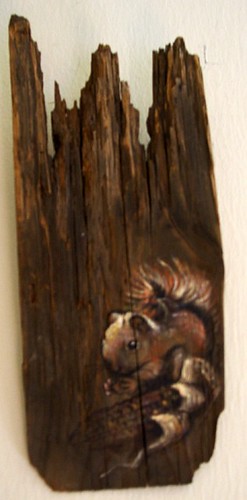Here's an image of a small oil painting that hangs on my wall. It's a squirrel in oil on barn wood.
I bought it at a street craft fair about 30 years ago. It's one of a kind.
The artist did not sign her name, and I have mislaid the receipt in the move I made from Kentucky to Tennessee. She was doing these before one's eyes, in her booth. But I believe it is fair use to photograph it for my own use and pleasure, and to ask for help in doing that optimally, here at OPF.
Could I have made the shot better? It's cropped a bit, here, and considerably downsized. I sharpened it once and brightened it the merest shade, to bring it nearer to how my eye sees it on my wall.
@Nik--in reference to my Optimize thread in the Retouch, Repair forum: this squirrel has nothing whatsoever to do with my early dawn rabbit. < she said with a smile >
Squirrel, Oil on Barn Wood

Comments will be very welcome.
Mary
I bought it at a street craft fair about 30 years ago. It's one of a kind.
The artist did not sign her name, and I have mislaid the receipt in the move I made from Kentucky to Tennessee. She was doing these before one's eyes, in her booth. But I believe it is fair use to photograph it for my own use and pleasure, and to ask for help in doing that optimally, here at OPF.
Could I have made the shot better? It's cropped a bit, here, and considerably downsized. I sharpened it once and brightened it the merest shade, to bring it nearer to how my eye sees it on my wall.
@Nik--in reference to my Optimize thread in the Retouch, Repair forum: this squirrel has nothing whatsoever to do with my early dawn rabbit. < she said with a smile >
Squirrel, Oil on Barn Wood

Comments will be very welcome.
Mary
Last edited:
